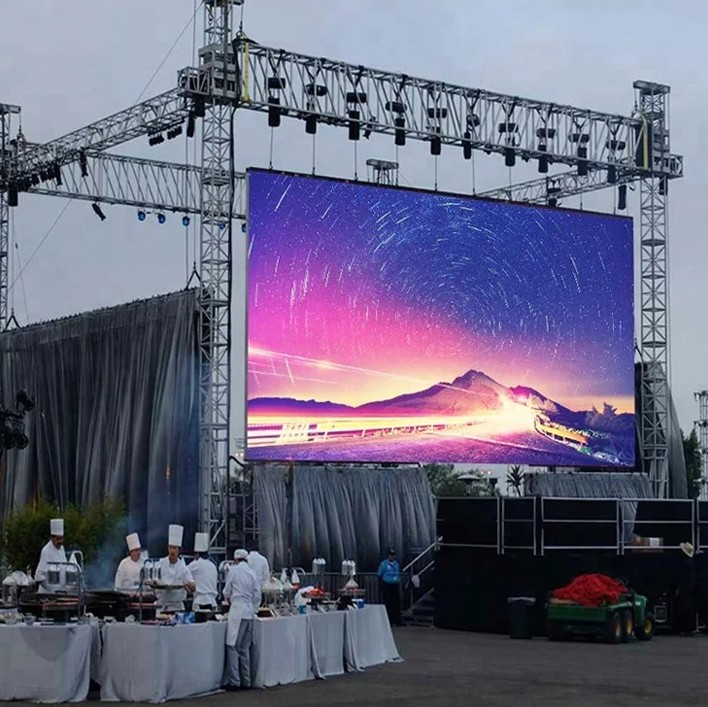LED display screens generate a lot of heat due to their dense pixel density. When used outdoors for a long time, the internal temperature is bound to gradually rise, especially for large outdoor LED display screens where heat dissipation has become a crucial issue, The heat dissipation of LED display screens indirectly affects the service life of LED display screens, and even directly affects the normal use and safety of LED display screens. How to dissipate heat has also become a necessary consideration for display screens.

01 Heat dissipation design methods
The heat exchange area between heating electronic components and cold air, as well as the temperature difference between heating electronic components and cold air, directly affect the heat dissipation effect. This involves the design of the air volume and air duct for entering the LED display box. When designing ventilation ducts, it is advisable to use straight pipes to transport air and avoid using pipes with sharp turns and bends. Ventilation ducts should avoid sudden expansion or contraction. The expansion angle should not exceed 20o, and the contraction cone angle should not exceed 60o. Ventilation ducts should be sealed as much as possible, and all overlaps should follow the direction of flow.
02 Precautions for Box Design
The intake hole should be set on the lower side of the box, but not too low, to prevent dirt and water from entering the box installed on the ground.
The exhaust hole should be set on the upper side near the box.
Air should circulate from the bottom to the top of the box, and dedicated air intake or exhaust holes should be used.
Cooling air should be allowed to flow through the heating electronic components while preventing short circuits in the airflow.
Filter screens should be installed at the inlet and outlet to prevent debris from entering the box.
Natural convection should be designed to facilitate forced convection
During design, it is necessary to ensure that the intake and exhaust ports are kept away from each other. Avoid reusing cooling air.
Ensure that the direction of the radiator slot is parallel to the wind direction, and the radiator slot cannot block the air path.
The fan is installed in the system, and due to structural limitations, the inlet and outlet are often obstructed, resulting in changes in its performance curve. Based on practical experience, it is best to have a distance of 40mm between the inlet and outlet of the fan and the obstruction. If there are space limitations, it should also be at least 20mm.
The maintenance plan for outdoor LED display screens includes measures for heat dissipation and avoiding improper operation during use. It is generally recommended to install a fan or air conditioner to enhance the cooling function.
Post time: Aug-12-2024




